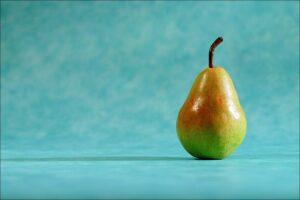The drought did not spare the pears either
This year, the lowest pear harvest of the last ten years is expected, according to the overview of the National Chamber of Agriculture (NAK) and the Hungarian Vegetable and Fruit Trade Organization (FruitVeB).

(Photo: Pixabay)
In recent years, the area under pear cultivation and the amount of production in our country have continuously decreased, and a decrease in production is expected this year as well. In our country, pears are grown on 1,886 hectares, including many landscape varieties. A poor harvest was also harvested last year. This year, the weather conditions were far from optimal, and according to the overview of NAK and FruitVeB, even less harvest than last year is expected. However, the most striking phenomenon in the long term – with the aging of the plantations and the continuous deterioration of their condition – is the decrease in yield potential. This year, most of the pear plantations survived the spring frost damage almost unscathed, but the subsequent heat and drought were a big problem. The intense rains in May were followed by a long period of drought, and damage from the pear leaf flea had to be reckoned with. The harvest can only be acceptable with abundant irrigation, on the other hand, the early spring and the hot, dry period also brought the harvest three weeks earlier. The quality of the fruit depends on the technological level of the plantations and the combination of appropriate expertise, and is therefore highly variable; but from intensive, well-maintained orchards, beautiful goods can be brought to market. Another problem is that, due to the early harvest, the pickers had to work in temperatures of 36-38°C, and on the other hand, the cold stores were not designed for the sudden storage of large quantities of hot fruit (over 40°C). From the point of view of plant protection, the pear aphid has been a huge problem for years, and it is becoming more and more difficult to protect against it due to the continuous withdrawals of pesticides. As with all fruits, the labor shortage is a problem for pears, especially during the harvest season. There was no generational change in the sector, the circle of producers is narrowing, the desire to produce is decreasing, there are no new entrants.
Half of the Hungarian pear plantations are located in Szabolcs-Szatmár-Bereg (514 hectares) and Borsod-Abaúj-Zemplén (410 hectares)
There are also significant areas in Heves and Zala (around 200 hectares each), as well as Pest and Bács-Kiskun counties (100 hectares each). Among the varieties, William is dominant, accounting for half of the total production, but Fétel Apát (Abate Fétel) and Alexander (Bosc kobak) also produce around 1,000 tons. The production area of the pear has decreased significantly in recent years, due to its special climatic requirements, its yield is weak, and the fluctuation between years is huge. The production volume ranges between 15-30 thousand tons, 20-40% of which is purchased by the processing industry (mainly Vilmos), the amount of pears reaching the fresh market is extremely hectic. Our country has long been a net importer of pears, the crop does not cover consumption: exports are fluctuating, between 100 and 850 tons, imports are 6-8 thousand tons.
Hungarian pears compete with Belgian, Dutch, Italian and Polish pears in Hungarian supermarket chains
Our competitive disadvantage – even with regard to modern farms – lies in the climatic factors, due to which our competitors can produce double or triple the specific yield. The sector’s serious problem is the lack of up-to-date plantations and the lack of expertise: new subject and variety trials and more modern cultivation technology would be needed. While a significant part of cultivation is based on traditional varieties (Vilmos, Bosc Kobak, Packham’s Triumph, Conference), several new varieties are already used abroad. They have a high yield and can be produced at a lower cost, so they can be offered at a lower consumer price. In addition, the premium product category, high-priced licensed varieties, which are typically bought individually, have appeared.
NAK/FruitVeb
Related news
AM: Government helps farmers with a loan moratorium
🎧 Hallgasd a cikket: Lejátszás Szünet Folytatás Leállítás Nyelv: Auto…
Read more >More than 100 Hungarian farmers also demonstrated in Brussels
🎧 Hallgasd a cikket: Lejátszás Szünet Folytatás Leállítás Nyelv: Auto…
Read more >Hungarian champagne crowns the end-of-year holidays!
🎧 Hallgasd a cikket: Lejátszás Szünet Folytatás Leállítás Nyelv: Auto…
Read more >Related news
How do young adults celebrate?
🎧 Hallgasd a cikket: Lejátszás Szünet Folytatás Leállítás Nyelv: Auto…
Read more >Vajda-Papír celebrates Ooops!’s 15th anniversary with a hybrid AI campaign
🎧 Hallgasd a cikket: Lejátszás Szünet Folytatás Leállítás Nyelv: Auto…
Read more >Pre-holiday shopping at up to half price
🎧 Hallgasd a cikket: Lejátszás Szünet Folytatás Leállítás Nyelv: Auto…
Read more >






